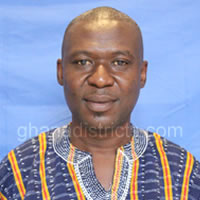Population
The population of the Cape Coast Metropolitan area (excluding Aggrey Memorial Zion Secondary School) was 54,123 in 1960 and 69,495 in 1970, giving an inter-censal increase of 28.40%. In 1984 and 2000 the population increased again to 84,477 and 118,106 respectively, indicating a substantial increase of 39.8% for the 14-year period. The population grew at a rate of 22% between 1960 and 1970, dropped sharply to 13% between 1970 and 1984 and then rose to 20% between 1984 and 2000.
In 1984, the population of the Metropolitan area was 7.5% of the Central Region’s population, but this declined slightly to 7.4 in the 2000 Population and Housing Census. Giving the present rate of growth of the population, it is projected that the Metropolitan area’s share of the Region’s population would not change significantly in the few years ahead. Cape Coast Metropolitan with its 82,291 inhabitants has a disproportionate share of the Municipal in terms of both landmass and population.
The town has expanded since 1984 when it returned a population of 65,763 compared with 56,601 in 1970. The expansion has virtually engulfed both Pedu and Abura; two previously satellite villages that are now almost part of the urbanised area. The whole Metropolitan area is constrained by availability of land for farming and development. The situation is worse in Cape Coast town because of its hilly and undulating topography.
Age-Sex distribution
The male/female ratio is 94.4:100. In 1984, there were 42, 855 males as against 42,583 females in the Municipal area, giving a sex ratio of 100 males to 101 females at the time. In 2000 the figures were 57,367 males and 60,741 females. Although the larger female population reflects the national pattern, the phenomenon in this metropolis may be attributed firstly to a higher male out-migration rate; and secondly, to the rapidly urbanizing nature of he Metropolitan area which encourages economically active females to stay back and engage in small-scale economic activities.
The population pyramid indicates that the Metropolis is largely characterized by a youthful population with those under 15-year accounting for 42.2% of the total population.Females fairly out-number males in each age-cohort except that of the 0-14 age cohort. The ageing cohort (ie.65+) is relatively normal with a tapering of the pyramid at the top, signifying a general bell-shaped pyramid characteristic of developing areas. The nature of the population requires that programmes are youth-centred. However, this does not preclude the provision of programmes for the aged such as social security, pension and welfare schemes.
Settlement Pattern
The Cape Coast Metropolis has 71 settlements. Cape Coast Township (core) was the only noticeable urban centre in the Metropolis in 1984 with a population of 65,763. The 2000 Population and Housing census returned a figure of 82,291 for the township. Ekon (3,443), Nkanfoa (2,995), Kakomdo (2,628) and Efutu (2,214) are the other fairly large settlements but do not possess any urban status as yet. Smaller service centres are also emerging such as Apewosika (1,547), Ankaful (1,592), Kwaprow (1,473), Esuekyir (1,453), Akotokyer (1,605) and Anto Esuekyir (1,557).
The Cape Coast Metropolitan Assembly area is synonymous with a City District. This is because Cape Coast Township is the most populous settlement in the Metropolis with a hierarchy of functions that make it the nerve centre of economic activity for both the District and the Region.
About 6% of settlements in the Metropolis including Cape Coast, Ekon and Nkafoa and Kakomdo account for nearly 85% of the population of the entire Metropolis. Out of the 71 settlements in the Metropolitan area, 54 or 76% of them have populations less than 1,000 persons and account for only 10% of the metropolis population. Thirty of the settlements (43%) have populations of less than 100 persons.
Rural-urban split
The Metropolitan Assembly area has a peculiar rural-urban scenario. Cape Coast has been the only urban centre in the district since 1960. By 1984 the rural-urban split for the district was 32.3:67.7 as against 71.2:28.8 for the region and 63.1:36.9 for the nation.
In the 2000 Population and Housing Census, the rural-urban returns changed slightly to 30.3:69.7 for the metropolis, 62.5:37.5 for the region and 56.2:43.8 for the country. These figures indicate that the Metropolitan Assembly area is more urbanised than the region and the nation respectively, and any development plan ought to take this into consideration in formulating its activities.
Drinking Water
Safe water supply and sanitation are essential components of any intervention programme designed to secure sustained family health. Lack of potable water predisposes the population to various preventable diseases such as guinea worm, diarrhea and cholera. The potential of these diseases to negatively affect labour productivity and hamper progress in developmental efforts are enormous and steps should be taken to prevent their occurrence in the District.
Fortunately, the Metropolis is quite well served with potable drinking water. All communities in the metropolis are served with pipe-borne water from the conventional treatment plant at Brimsu. Rural supplies from just 1% of the drinking water system in the Metropolitan area and these areas are also well catered for.
Date Created : 11/16/2017 4:04:34 AM






 facebook
facebook X (twitter)
X (twitter) Youtube
Youtube +233 593 831 280
+233 593 831 280 0800 430 430
0800 430 430 GPS: GE-231-4383
GPS: GE-231-4383 info@ghanadistricts.com
info@ghanadistricts.com Box GP1044, Accra, Ghana
Box GP1044, Accra, Ghana